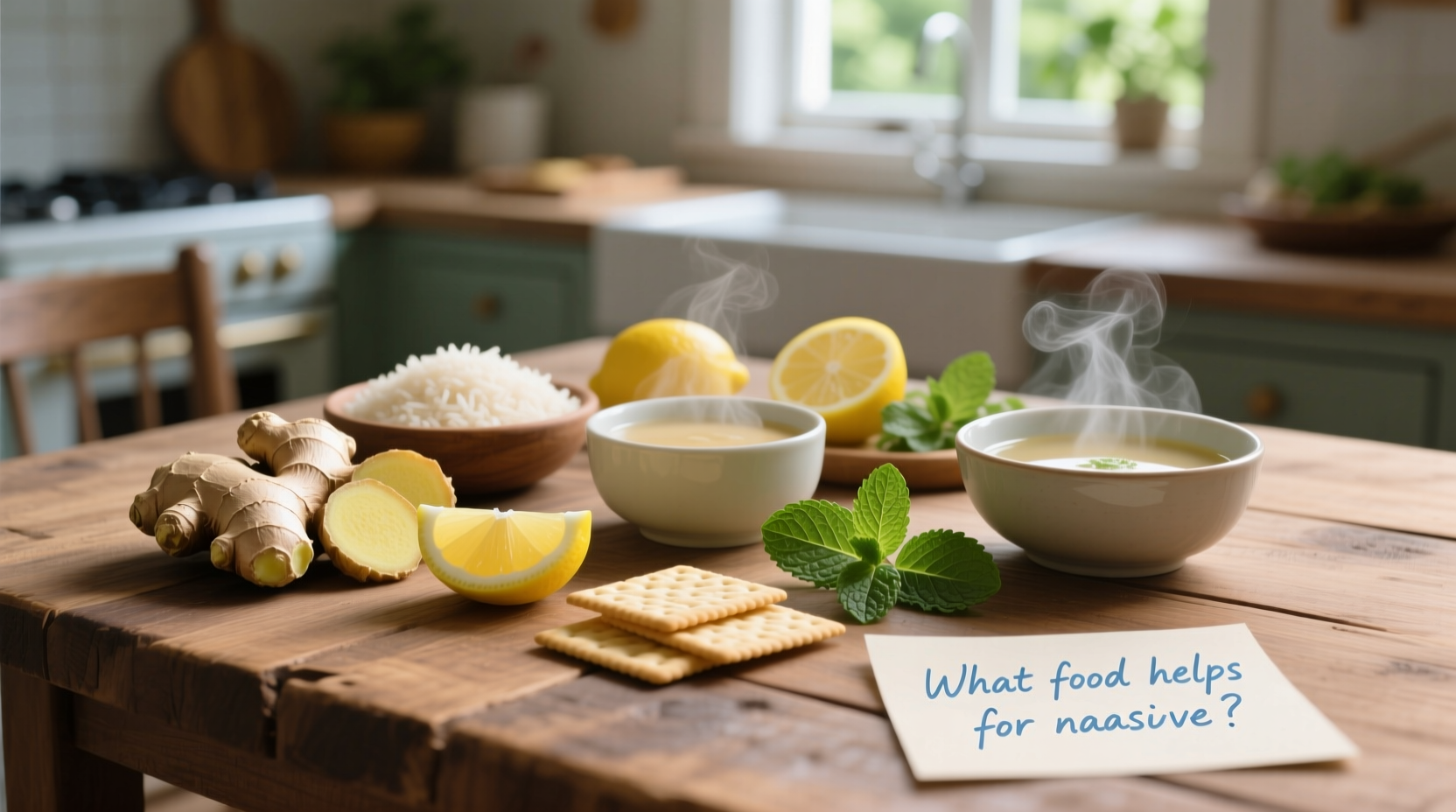When nausea strikes, choosing the right foods can mean the difference between feeling worse or finding quick relief. Based on clinical research and gastroenterological guidelines, certain foods have proven effectiveness at settling an upset stomach. This guide delivers evidence-based dietary strategies that actually work, organized in the order you'd use them when experiencing nausea.
Immediate Relief Options (First 30 Minutes)
When nausea hits, your first food choices matter most. These options provide the fastest physiological relief:
Ginger: Nature's Anti-Nausea Powerhouse
Ginger contains active compounds like gingerols that directly impact serotonin receptors in the digestive tract. A National Center for Complementary and Integrative Health study confirmed ginger's effectiveness for various nausea types. Try these formats in order of fastest absorption:
- Fresh ginger tea (steep 1-2 tsp grated ginger in hot water for 5 minutes)
- Ginger chews (look for products with 50-100mg gingerol per serving)
- Ginger capsules (standardized to 5% gingerols)
Cold, Bland Carbohydrates
Cold temperatures can numb stomach nerves while bland carbs stabilize blood sugar. The classic "saltine cracker protocol" works because:
- They're low in fat and fiber, minimizing digestive workload
- Sodium content helps maintain electrolyte balance
- Dry texture absorbs excess stomach acid
For best results, eat one cracker every 10-15 minutes rather than several at once. Toast or plain rice cakes work similarly for those avoiding wheat.

Nausea-Fighting Foods Comparison
| Food | Time to Relief | Best For | Limitations |
|---|---|---|---|
| Ginger | 15-30 minutes | Morning sickness, motion sickness, postoperative nausea | Can cause heartburn in some; avoid with blood thinners |
| Clear Broth | 20-40 minutes | Dehydration-related nausea, stomach flu | Avoid if vomiting continues; too early can trigger more nausea |
| Peppermint | 10-25 minutes | Stress-induced nausea, IBS-related nausea | Avoid with GERD; can worsen acid reflux |
| Plain Applesauce | 30-60 minutes | Children's nausea, medication side effects | Too much sugar can worsen symptoms |
What to Avoid During Nausea Episodes
Certain foods can worsen nausea through multiple physiological mechanisms. The Mayo Clinic identifies these common triggers:
- Fatty foods: Delay gastric emptying, increasing stomach pressure
- Strong odors: Trigger the vomiting center via olfactory pathways
- Carbonated beverages: Distend the stomach with gas
- Acidic juices: Irritate stomach lining already in distress
Special Considerations by Nausea Type
Nausea has multiple causes, each requiring tailored dietary approaches. The CDC notes these context-specific recommendations:
Morning Sickness
For pregnancy-related nausea, the American College of Obstetricians and Gynecologists recommends:
- High-protein snacks before rising (hard-boiled eggs, nuts)
- Vitamin B6 supplements (with doctor approval)
- Cold foods to avoid triggering smell sensitivity
Postoperative Nausea
After surgery, follow this progression:
- Clear liquids only for first 2 hours
- Ice chips or popsicles for oral rehydration
- Progress to ginger ale (flat) after 4 hours
Chemotherapy-Induced Nausea
Oncology nutritionists recommend:
- Ginger supplements starting 24 hours before treatment
- Cold foods to minimize smell exposure
- Small, frequent meals rather than three large ones
When Food Isn't Enough: Medical Red Flags
While dietary approaches help most nausea cases, certain symptoms require immediate medical attention according to NIH guidelines:
- Nausea lasting more than 48 hours
- Inability to keep down liquids for 12+ hours
- Signs of severe dehydration (dark urine, dizziness)
- Vomiting blood or material resembling coffee grounds
For persistent nausea, consult a healthcare provider to rule out underlying conditions like gastroparesis, migraines, or gastrointestinal obstructions.











 浙公网安备
33010002000092号
浙公网安备
33010002000092号 浙B2-20120091-4
浙B2-20120091-4